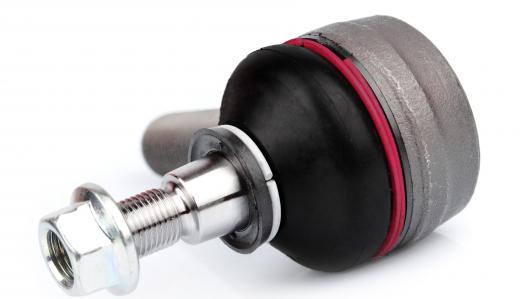An angle valve is a fluid regulating device used in plumbing and industry. It has inlet and outlet ports aligned at an angle with respect to each other, the most common angle being 90 degrees. The inlet and outlet ports can be threaded for connecting to galvanized steel and iron pipes, or they can have compression fittings for connecting to copper pipes. When an angle valve is used as a shut-off valve for residential plumbing fixtures, it is called an angle stop valve, or simply an angle stop.
There are two different valve mechanisms commonly used in angle valves. A compression mechanism has a threaded stem that tightens a washer or ground joint against the valve seat to stop fluid or gas flow when the handle is turned counterclockwise. An angle ball valve, on the other hand, as a tight-fitting ball made of metal or plastic with a hole through it. Fluid passes through the hole when the valve is open, but when the handle is turned through 90 degrees, the hole aligns perpendicularly to the flow and it stops.

Residential plumbing systems have several angle stops. There is usually one connected to every toilet and two to every faucet so that the water to these fixtures can be shut off in the event they need repair. Many residential water lines are made of copper, so the inlet port of a residential angle valve usually has a compression fitting, while the outlet ports are threaded so that a flexible tube leading to the fixture can be screwed on. The typical residential angle stop is an angle ball valve made of chromed metal with an inexpensive plastic ball, and it can have one or two outlet ports, depending on how many fixtures it supplies.
There are many uses for an angle valve in industry and public utilities. A spring-loaded version of a compression angle valve is used for transferring and dispensing compressed fuels, such as liquid propane. Municipal water companies often route pressurized water through an angle valve that is situated to make to accessible. These companies may also install an angle check valve in their lines to prevent the back flow of contaminants into drinking water. An angle valve may also be installed on the outlet at the bottom of a tank storing water or some other fluid so that pipes can be routed vertically from the outlet to another tank or wherever else it is needed.
